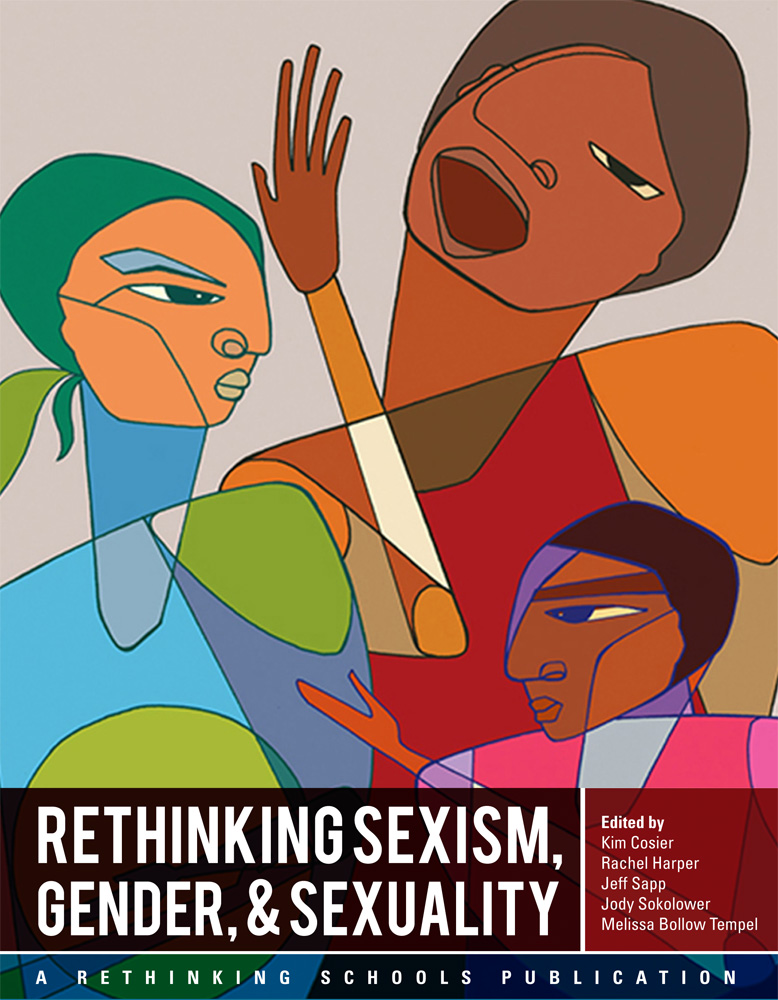by Jody Sokolower
 One of the pleasures of working on Rethinking Sexism, Gender, and Sexuality has been the discussions among the editorial committee as we have outlined the book, reviewed submissions, and brainstormed chapter introductions. We’re a small group but we span generations, cultures, and experiences; our meetings are lively, thoughtful, and mind-expanding.
One of the pleasures of working on Rethinking Sexism, Gender, and Sexuality has been the discussions among the editorial committee as we have outlined the book, reviewed submissions, and brainstormed chapter introductions. We’re a small group but we span generations, cultures, and experiences; our meetings are lively, thoughtful, and mind-expanding.
One of the most important issues we’ve discussed is the proliferation of anti-bullying campaigns now being marketed and implemented in school districts across the country. Talking openly with children about how we treat each other is almost always a good thing, but we have serious concerns about anti-bullying as an approach.
For one thing, anti-bullying is reactive rather than proactive. Building community—helping children look for what connects them with others and encouraging them to feel empathy—creates classrooms and schools where bullying is much less likely to happen.
For another, bullying freezes children (and adults, too) into static roles: the bully, the victim, the potential ally. But all of us are more complicated than that, and most conflict situations are more complicated, too. Teaching young people to understand the social contexts that can lead to problems—racism, sexism, homophobia, ableism, among others—gives them the tools to solve problems without labeling others.
 I remember an example from when my own daughter had just started 6th grade in a new school district. She has always been gender nonconforming, and middle school is especially hard for nonconformists of all types. Another girl on the basketball team teased her nonstop for dressing like a boy, looking like a boy. I knew that this child was being raised by a grandmother who was now too ill to take care of her; her home life must have been incredibly stressful. As a lesbian, I had a strong hunch that issues of sexuality and gender were barely beneath the surface for her, too. Tensions over race and academic confidence were part of the mix. But the school did no community building; there was no effort to help students talk with each other about the issues they were grappling with as brand new adolescents. What a difference it would have made if teachers were talking to each other about how to create something positive. Instead, my daughter stopped playing basketball.
I remember an example from when my own daughter had just started 6th grade in a new school district. She has always been gender nonconforming, and middle school is especially hard for nonconformists of all types. Another girl on the basketball team teased her nonstop for dressing like a boy, looking like a boy. I knew that this child was being raised by a grandmother who was now too ill to take care of her; her home life must have been incredibly stressful. As a lesbian, I had a strong hunch that issues of sexuality and gender were barely beneath the surface for her, too. Tensions over race and academic confidence were part of the mix. But the school did no community building; there was no effort to help students talk with each other about the issues they were grappling with as brand new adolescents. What a difference it would have made if teachers were talking to each other about how to create something positive. Instead, my daughter stopped playing basketball.
Giving teachers the tools to support students—all students—is at the core of why Melissa, Kim, Jeff, Rachel, and I are so happy to be working on Rethinking Sexism, Gender, and Sexuality. The beautiful work being done by educators all over the country inspires us every day.
And the enthusiastic response to our Indiegogo campaign has made us realize how many of us are eagerly awaiting this book.
If you’d like to delve more into the problems with anti-bullying campaigns, check out “10 Ways to Move Beyond Bully Prevention (and why we should),” by Lyn Mikel Brown. You can read it online now or as part of our book as soon as it’s published.
Watch the video that tells the story of how the book came to be, and join the community of supporters who are making it possible for us to publish it.
